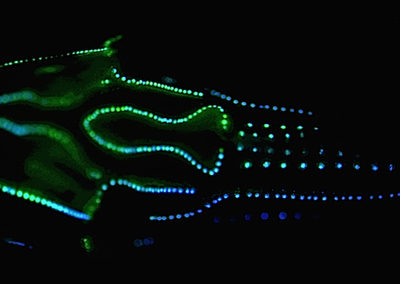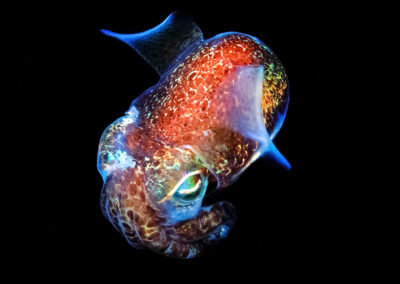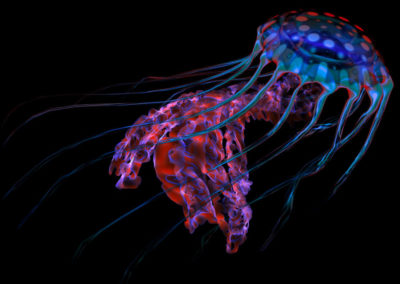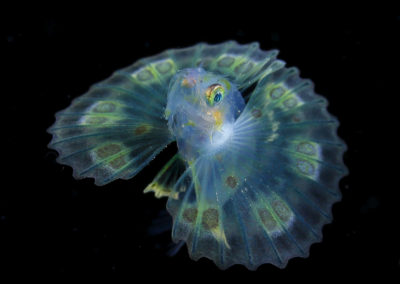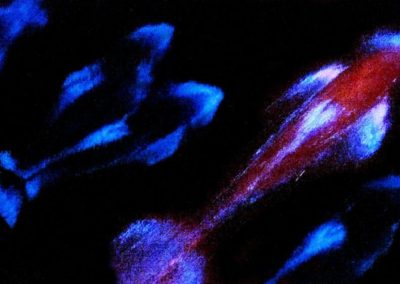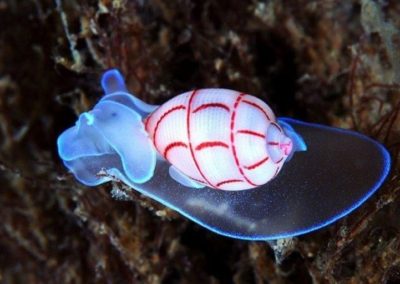Bioluminescence is amongst the world’s most fascinating phenomena. To us it looks like a bunch of glowing lights in the sky or in the water but there’s so much more to these lights.
Bioluminescence is the product of a chemical reaction that occurs inside the organism that emits the light. This reaction consists of luciferin and either luciferase or photoprotein. Luciferin is the compound that produces light and determines what color is emitted, luciferase is an enzyme that creates the light, and photoproteins are less commonly seen but also produce light. Blue-green is the most common color of light emitted by species. For marine species this is due to the fact that most organisms are sensitive to blue-green colors and can’t process yellow, red, or violet.
Most people believe that bioluminescence is a rare occurrence, but most marine species like bacteria, fish, sharks, squids, and jellyfish can all produce this chemical reaction. Some land species like fireflies and fungi also have bioluminescence. It is hard to spot a species emitting bioluminescence because it has to be dark out and it only occurs in specific habitats, but that doesn’t mean it is impossible.
Many organisms use bioluminescence as a form of self defense. When being hunted an organism can emit light to confuse its predator, scare them off, or delay their attack. Counterillumination is another form of defense. This is when a species camouflages itself using their light emitters to match the amount of light coming into the water from the surface, therefore making themselves seem invisible to predators below. Bioluminescence is also a form of offense and can be used to lure in prey or to search for prey.
Not only can the light emitted help predators or protect against them, but can be used as a form of attracting mates and to show changes in habitat. Some species will change light colors when their are shifts in salinity, in temperature, etc. in their environment.



